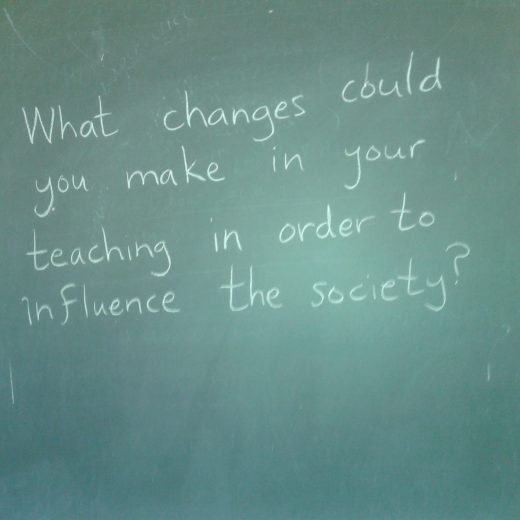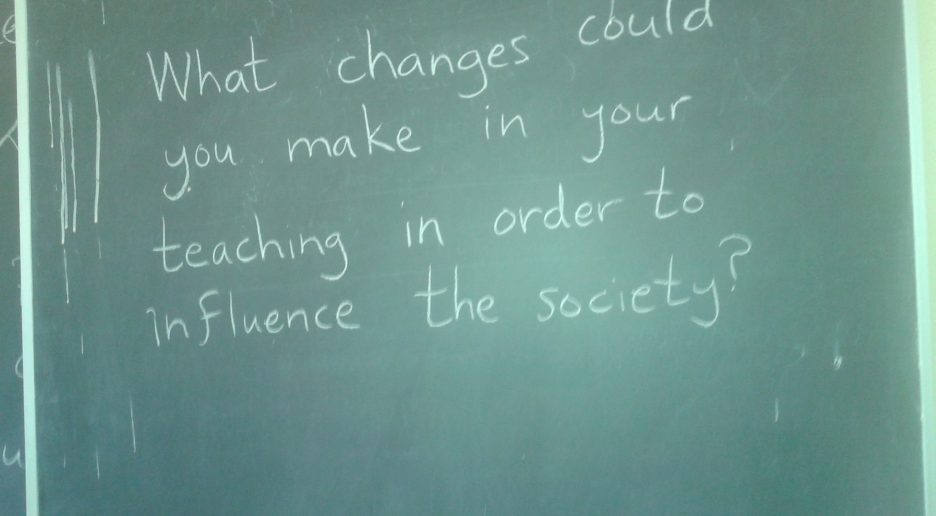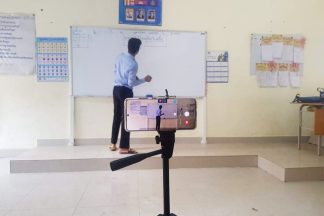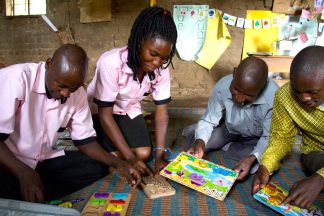During my time in Eritrea, I have heard several different teachers say, “Our students are our mirror.” In an education system dominated by the lecture method, teachers often rely on the facial expressions of their students (bored, confused, interested?) to make assumptions about whether learning is taking place.
When two teachers take on the activity of co-teaching in order to find ways to make lessons more interactive, the individual teacher begins to get a lot more information about the teaching and learning process. Co-teaching offers us a critical colleague, who serves as a much clearer mirror.
A popular method in Finland
Co-teaching is an increasingly popular practice in the Finnish
context, where more and more educators are waking up to the benefits of letting other professionals into their classroom. In my experience, when I co-teach with someone, I get critical and insightful feedback from a fellow professional. In addition, co-teaching frees up time, so that I have more opportunities to interact with individual students. This in turn leads to a clearer understanding of what is really happening in the classroom.
Foundations of Education
Nearing the end of the first semester at Asmara Community College 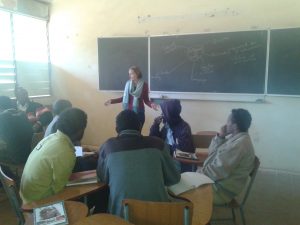 of Education (ACCE), a local pedagogy teacher and I paired up to co-teach some lessons for the course, ‘Foundations of Education.’ The course was intended for Diploma students, the majority of whom have several years of experience in the teaching profession and are attending ACCE to upgrade their qualifications. My local colleague has taught the course several times and was enthusiastic to try new things to make the course more meaningful through learner-centered interactive pedagogy.
of Education (ACCE), a local pedagogy teacher and I paired up to co-teach some lessons for the course, ‘Foundations of Education.’ The course was intended for Diploma students, the majority of whom have several years of experience in the teaching profession and are attending ACCE to upgrade their qualifications. My local colleague has taught the course several times and was enthusiastic to try new things to make the course more meaningful through learner-centered interactive pedagogy.
Shared brainstorming
In practice, our co-teaching took the form of shared brainstorming and planning sessions before the lessons, followed by lessons in which we both took turns facilitating activities. These lessons were then followed by critical discussions about what went well and what we still hope to improve. I can give an example of one of the topics 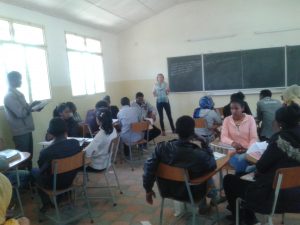 covered. Earlier in the course, the students had learned about the role of sociology in researching education, so during one lesson groups analyzed elementary school textbooks to identify positive, negative and ambiguous cultural features. The whole group discussion that followed brought up new points for teachers and students alike. Finally, the original question was flipped around when we asked the groups to consider how they can critically use textbooks as a resource in teaching, rather than letting the textbooks dictate the process.
covered. Earlier in the course, the students had learned about the role of sociology in researching education, so during one lesson groups analyzed elementary school textbooks to identify positive, negative and ambiguous cultural features. The whole group discussion that followed brought up new points for teachers and students alike. Finally, the original question was flipped around when we asked the groups to consider how they can critically use textbooks as a resource in teaching, rather than letting the textbooks dictate the process.

